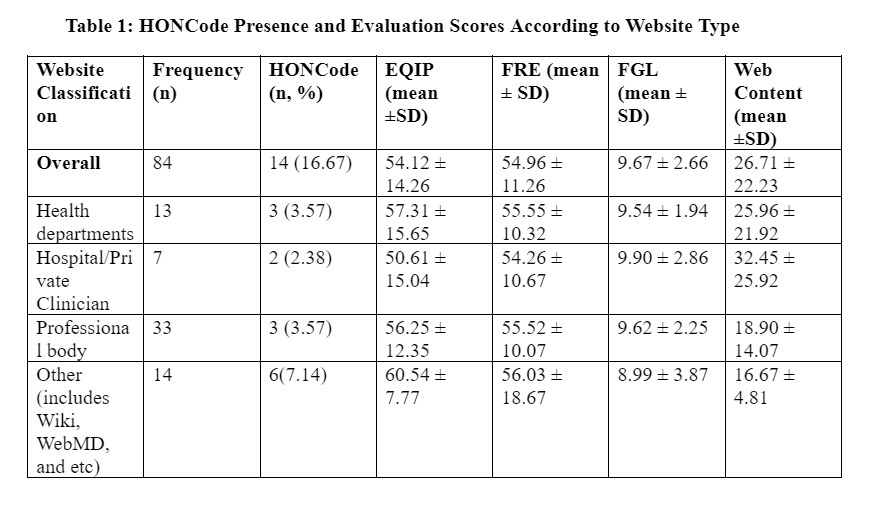Children with Chronic Conditions
Category: Abstract Submission
Children with Chronic Conditions I
134 - Evaluating Sickle Cell Disease Transition Online Healthcare Information
Sunday, April 24, 2022
3:30 PM - 6:00 PM US MT
Poster Number: 134
Publication Number: 134.304
Publication Number: 134.304
Thomas J. Annesi, Donald and Barbara Zucker School of Medicine at Hofstra/Northwell, Westbury, NY, United States; Caren Steinway, Donald and Barbara Zucker School of Medicine at Hofstra/Northwell, New Hyde Park, NY, United States; Toyosi Oluwole, Northwell, New Hyde Park, United States; Jack Chen, Northwell Health, Jamaica, NY, United States; Sophia Jan, Cohen Children's Medical Center, New Hyde Park, NY, United States

Thomas J. Annesi, Jr., BS
Medical Student
Donald and Barbara Zucker School of Medicine at Hofstra/Northwell
Westbury, New York, United States
Presenting Author(s)
Background: Adolescents and young adults with Sickle Cell Disease (SCD) transitioning from pediatric to adult health care face a high-risk period associated with increased use of acute healthcare services and mortality. While 59% of Americans report using the internet for health care information, the quality of online patient-facing resources regarding SCD transition have not been evaluated.
Objective: To evaluate the quality and readability of SCD healthcare transition online information using HONCode, Flesch-Kincaid Reading Ease Score, Flesch Grade Level, EQIP and a novel Sickle Cell Disease Content Checklist.
Design/Methods: Keywords representing phrases people may use while searching for information on the Internet regarding SCD transition, including “Hydroxyurea” and “SCD Transition”, were identified. An online search using the keywords was conducted in July 2021 using Google, Yahoo, and Bing. The top 20 links from each search were collected. Duplicate websites, academic journals, and websites not related to SCD healthcare transition were excluded. Websites were categorized based on source: Health departments/government body, hospital/private clinician, professional society, and other. Websites were assessed using HONCode, Flesch Reading Ease (FRE), Flesch-Kincaid Grade Level (FGL), Ensuring Quality Information for Patients (EQIP), and a novel SCD content checklist (SCDCC). EQIP and SCDCC scores range from 0-100. Each website was reviewed by two research assistants and assessed for inter-rater reliability. Descriptive statistics were calculated.
Results: Of 900 websites collected, 84 met inclusion criteria: 13 Healthcare Departments, 7 Hospital/Private clinician, 33 Professional Body and 14 Other. 14 websites (16.6%) had HONCode certification. Websites with HONCode had higher FRE and EQIP scores and lower FGL scores than those without HONCode. Websites without HONCode had higher SCDCC scores. Only 7 websites (8.3%) met the NIH recommendation of a 6th grade reading level. Based on EQIP score, 5 websites (6.0%) were of high quality. The average SCDCC score was 26.7 ± 22.23. The interrater reliability in EQIP and SCDCC ratings was good (Pearson correlation: .718 and .897 respectively). No category of website scored significantly higher average EQIP, FRE, FGL, or SCDCC scores than the others.Conclusion(s): Although seeking health care information online is very common, the overall quality of information about SCD transition on the Internet is poor. Changes to current online healthcare information regarding SCD transition would benefit transitioning youth by providing expectations, knowledge, skills, and efficacy.
HONCode Presence and Evaluation Scores According to Website Type Categorical analysis of websites collected during the study. The websites were assessed for the presence of HONCode, Flesch Reading Ease (FRE), Flesh-Kincaid Grade Level (FGL), Ensuring Quality Information for Patients (EQIP), and a Sickle Disease Content Checklist. No category of website scored significantly higher average EQIP, FRE, FGL, or SCDCC scores than the others.
Categorical analysis of websites collected during the study. The websites were assessed for the presence of HONCode, Flesch Reading Ease (FRE), Flesh-Kincaid Grade Level (FGL), Ensuring Quality Information for Patients (EQIP), and a Sickle Disease Content Checklist. No category of website scored significantly higher average EQIP, FRE, FGL, or SCDCC scores than the others.
Objective: To evaluate the quality and readability of SCD healthcare transition online information using HONCode, Flesch-Kincaid Reading Ease Score, Flesch Grade Level, EQIP and a novel Sickle Cell Disease Content Checklist.
Design/Methods: Keywords representing phrases people may use while searching for information on the Internet regarding SCD transition, including “Hydroxyurea” and “SCD Transition”, were identified. An online search using the keywords was conducted in July 2021 using Google, Yahoo, and Bing. The top 20 links from each search were collected. Duplicate websites, academic journals, and websites not related to SCD healthcare transition were excluded. Websites were categorized based on source: Health departments/government body, hospital/private clinician, professional society, and other. Websites were assessed using HONCode, Flesch Reading Ease (FRE), Flesch-Kincaid Grade Level (FGL), Ensuring Quality Information for Patients (EQIP), and a novel SCD content checklist (SCDCC). EQIP and SCDCC scores range from 0-100. Each website was reviewed by two research assistants and assessed for inter-rater reliability. Descriptive statistics were calculated.
Results: Of 900 websites collected, 84 met inclusion criteria: 13 Healthcare Departments, 7 Hospital/Private clinician, 33 Professional Body and 14 Other. 14 websites (16.6%) had HONCode certification. Websites with HONCode had higher FRE and EQIP scores and lower FGL scores than those without HONCode. Websites without HONCode had higher SCDCC scores. Only 7 websites (8.3%) met the NIH recommendation of a 6th grade reading level. Based on EQIP score, 5 websites (6.0%) were of high quality. The average SCDCC score was 26.7 ± 22.23. The interrater reliability in EQIP and SCDCC ratings was good (Pearson correlation: .718 and .897 respectively). No category of website scored significantly higher average EQIP, FRE, FGL, or SCDCC scores than the others.Conclusion(s): Although seeking health care information online is very common, the overall quality of information about SCD transition on the Internet is poor. Changes to current online healthcare information regarding SCD transition would benefit transitioning youth by providing expectations, knowledge, skills, and efficacy.
HONCode Presence and Evaluation Scores According to Website Type
 Categorical analysis of websites collected during the study. The websites were assessed for the presence of HONCode, Flesch Reading Ease (FRE), Flesh-Kincaid Grade Level (FGL), Ensuring Quality Information for Patients (EQIP), and a Sickle Disease Content Checklist. No category of website scored significantly higher average EQIP, FRE, FGL, or SCDCC scores than the others.
Categorical analysis of websites collected during the study. The websites were assessed for the presence of HONCode, Flesch Reading Ease (FRE), Flesh-Kincaid Grade Level (FGL), Ensuring Quality Information for Patients (EQIP), and a Sickle Disease Content Checklist. No category of website scored significantly higher average EQIP, FRE, FGL, or SCDCC scores than the others.